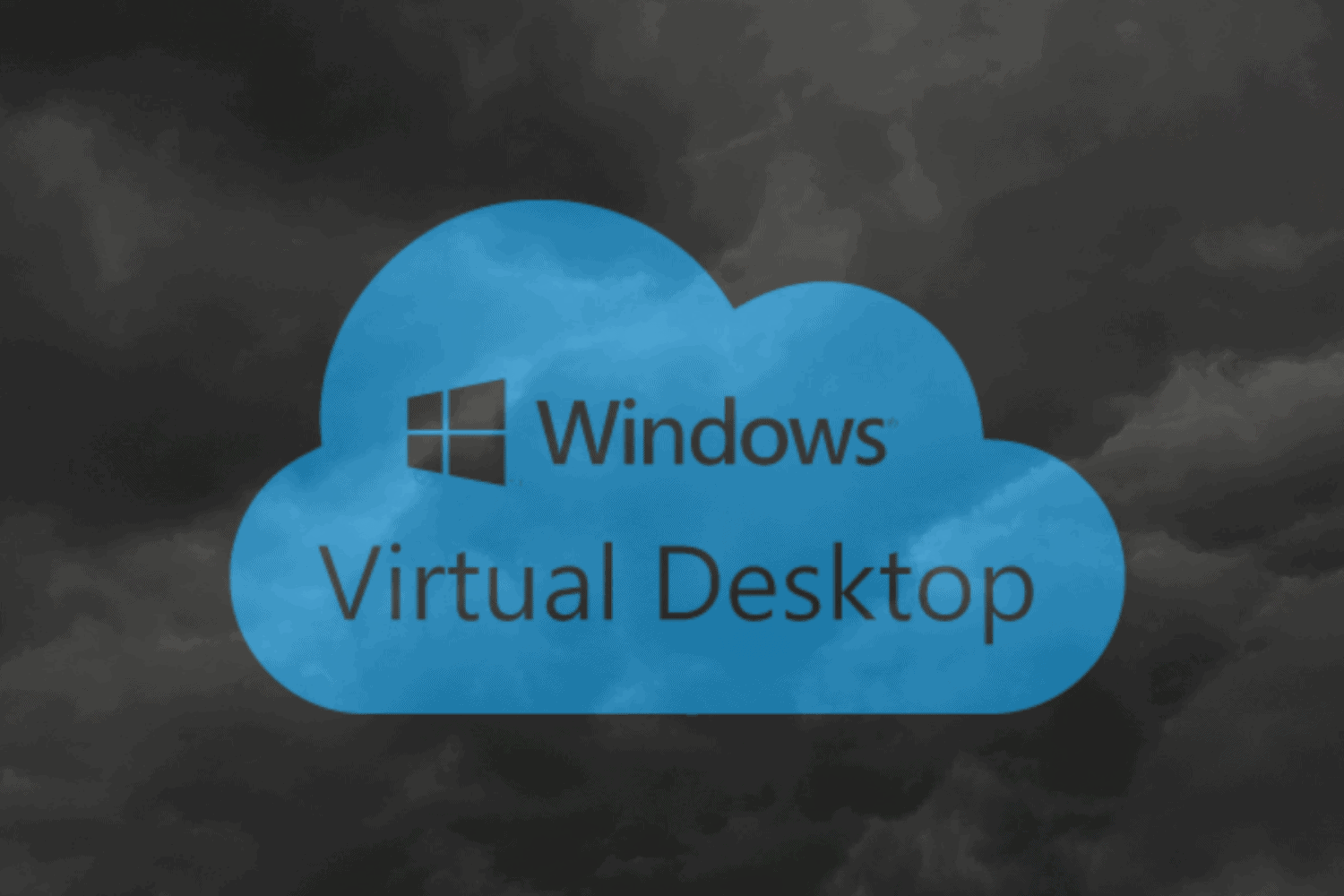
I’ve been working from home since March 2020 due to COVID-19. I’ll admit, working for an IT company that embraces all things cloud has made the transition almost easy. At ADNET, we’ve been using cloud technologies for years and have leveraged them for the current situation, allowing employees to work from home since the beginning of this pandemic. I’ve known how fortunate we are to be in the cloud for months now. I was even more inspired by my recent experience during Tropical Storm Isaias when Windows Virtual Desktop (WVD) saved my week.
What is Windows Virtual Desktop?
WVD is an Azure based cloud service that gives you everything you need with a single point of cloud access. It’s fast, agile and easy to use. Windows Virtual Desktop gives you the same IT experience you have at the office when working from home, all in a secure cloud environment.
One of the most amazing things about WVD is how easy it is to set up and use. Simply install the client, configure your settings, and connect to your WVD session – that’s it! In just three easy steps you’re up and running a secure work environment from anywhere. WVD can run all the line of business applications your organization needs and offers speed and performance that a VPN just can’t compete with.
Making the switch to WVD
I powered on my work laptop after coming home from vacation and prepared to join my first Monday morning Teams meeting. During that initial call, my laptop “blue-screened” five times, eventually landing on a sad face smiley with an error informing me that my hard drive no longer existed. This was the last thing I wanted to see on my first day back from vacation at 7:30 AM! Thankfully, working at an IT company, I knew our experts would be able to help.
While my return to work wasn’t off to a great start, the ADNET Technical Assistance Center (TAC) team quickly diagnosed a failure of the main hard drive and began ordering a replacement.
In the interim, the TAC team helped me switch to my personal laptop and use WVD. We focused on configuring my personal device to access ADNET data securely. This involved two main steps:
- Enable ADNET’s Foundations Detect + Respond, an endpoint detection and response solution designed to protect against ransomware, on my personal device.
- Configure access to ADNET’s Windows Virtual Desktop (WVD) environment, a Microsoft cloud-based desktop and application virtualization service, so I could safely connect to ADNET data and applications.
Getting WVD up and running on my personal laptop only took about 10 minutes once everything was configured. I had already been using WVD to make working from home more efficient, so I was able to start working again right away. This isn’t the first time WVD has come to my rescue. I’d used a VPN to connect to the ADNET network previously, but speed and performance were issues over a VPN connection – especially with certain applications. WVD fixed that problem. There’s no noticeable difference in performance between running those applications from home in the virtual desktop environment and working in the office.
The perfect (tropical) storm
I worked as though nothing had happened on Tuesday morning. Then came Tuesday afternoon – and Tropical Storm Isaias. For those in Connecticut and other areas affected by Isaias, I don’t have to tell you what the storm and subsequent disaster response was like. More than 1,000,000 Connecticut residents and businesses were without power at the peak of the storm’s impact. I lost power and Internet at home on Tuesday afternoon and didn’t get it back until late Friday.
So what now? My work computer is toast. We’re all supposed to be working from home due to COVID-19 pandemic restrictions. I have no power or Internet at home. Oh, and it’s month end. Welcome to a financial professional’s nightmare scenario.
How Windows Virtual Desktop saved my week
Fortunately, the ADNET office in Farmington, CT didn’t lose power, unlike much of the state and 77% of the town. Following all of ADNET’s pandemic-related rules, I drove to work with my personal laptop and was able to work seamlessly from the office on Wednesday. I completed all the tasks I needed to do for month-end last week with relative ease.
At the end of the week, I found myself saying to a colleague, “I should be having the worst work week ever right now, but it (not having my laptop) doesn’t even matter.”
I can’t overstate how lucky I got with this setup and combination of events. If I had to wait for my new hard drive to arrive, without power and internet at home I wouldn’t have been able to work at all last week. The ADNET TAC team would have had to spend time helping me instead of all the organizations affected by Tropical Storm Isaias. Thanks to WVD, I had access to every program I needed and I didn’t have to pull those team members away from helping our clients.
Other than those 10 minutes on Monday morning, I didn’t even notice the absence of my work computer that week. Of course, I’m happy to have my work laptop back, but not having it had no negative impact on my work. Windows Virtual Desktop saved my work week. This is the future of working from home – or anywhere – and not just during a local power outage.
If you have questions about Windows Virtual Desktop or how cloud solutions can help your remote workforce, reach out to us – we’re here to help!
